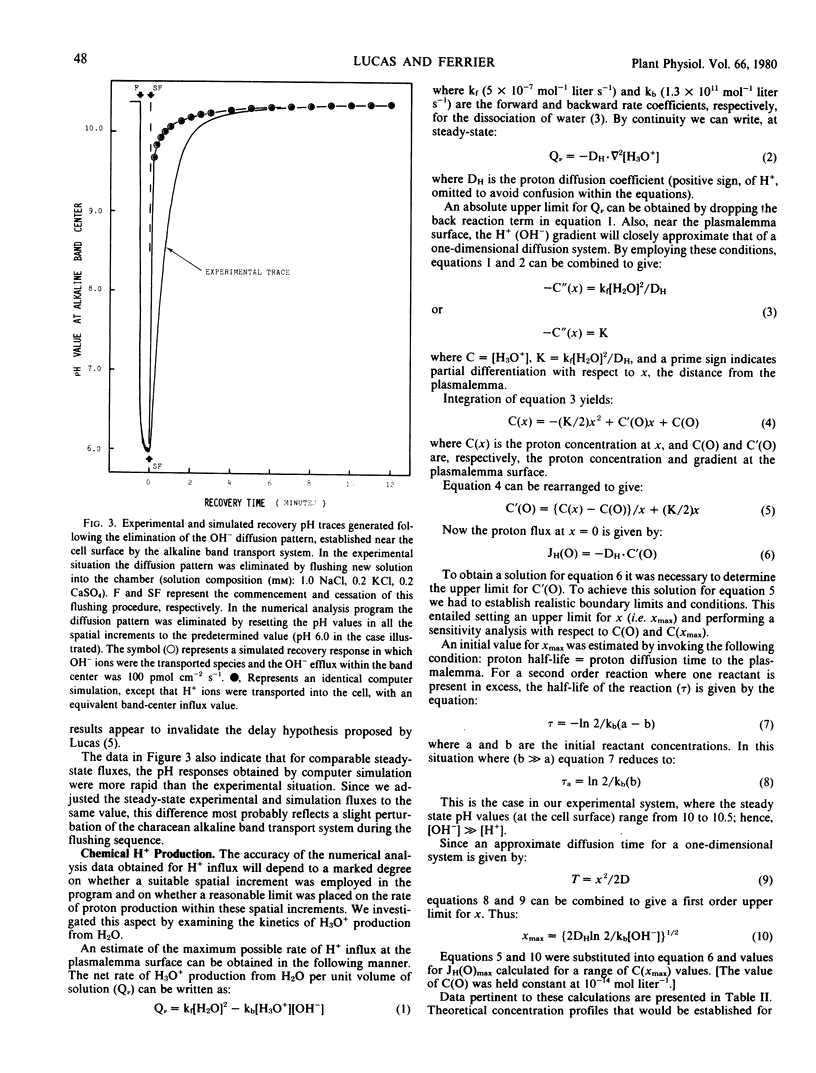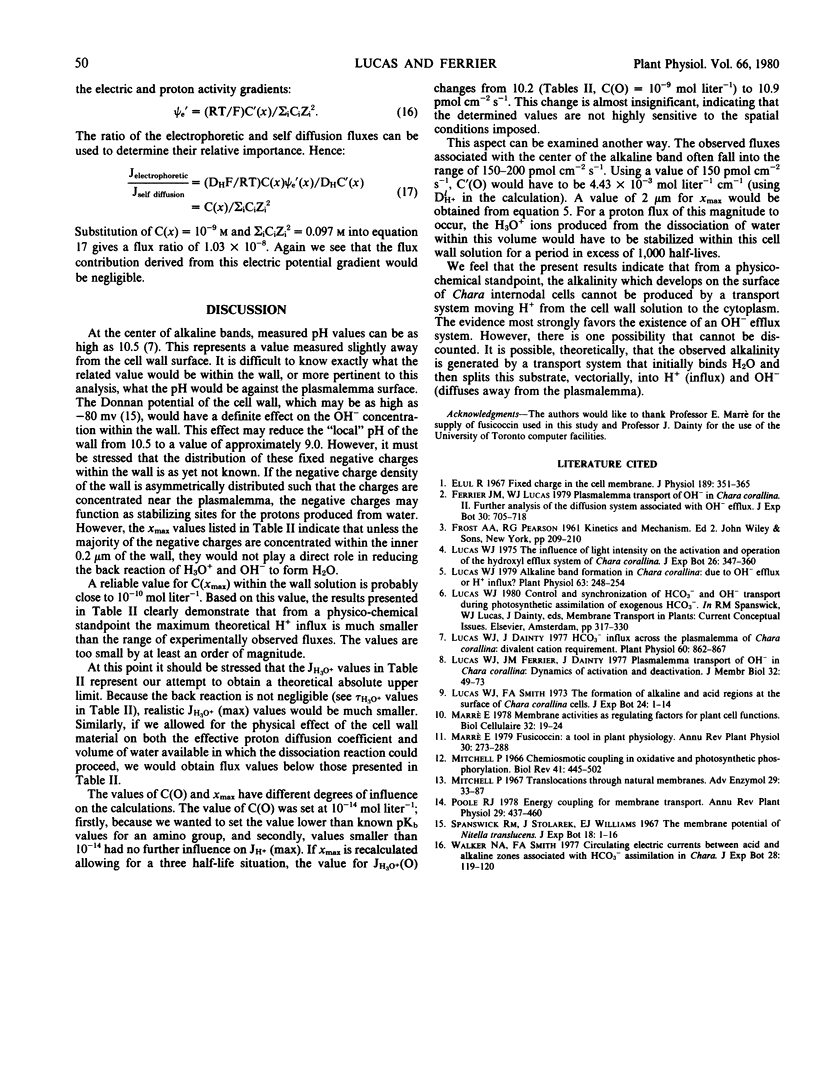Abstract
The identity of the plasmalemma-transported species that develops the alkaline bands of Chara corallina was investigated. The effect of fusicoccin on the rate of HCO3− assimilation, and on the time-dependent alkaline band pH buildup following low pH flushing, was found to be small, with no stimulatory effect. Computer simulation of the flushing experiments showed that in the experimental situation the alkaline band transport system was slowed down, rather than speeded up, by low pH flushing. A detailed theoretical examination of the maximum rate of proton production from water showed that measured alkaline band fluxes are too large to be explicable in terms of an H+ influx system. The experimental and theoretical results indicate that the plasmalemma transport of OH− ions is responsible for the measured negative external electric potential and alkalinity flux which are associated with the alkaline band phenomenon. Consequently, HCO3− influx across the characean plasmalemma must be charge-balanced by the efflux of OH− ions.
Full text
PDF




Selected References
These references are in PubMed. This may not be the complete list of references from this article.
- Elul R. Fixed charge in the cell membrane. J Physiol. 1967 Apr;189(3):351–365. doi: 10.1113/jphysiol.1967.sp008173. [DOI] [PMC free article] [PubMed] [Google Scholar]
- Lucas W. J. Alkaline Band Formation in Chara corallina: Due to OH Efflux or H Influx? Plant Physiol. 1979 Feb;63(2):248–254. doi: 10.1104/pp.63.2.248. [DOI] [PMC free article] [PubMed] [Google Scholar]
- Lucas W. J., Dainty J. HCO(3) Influx Across the Plasmalemma of Chara corallina: Divalent Cation Requirement. Plant Physiol. 1977 Dec;60(6):862–867. doi: 10.1104/pp.60.6.862. [DOI] [PMC free article] [PubMed] [Google Scholar]
- Lucas W. J., Ferrier J. M., Dainty J. Plasmalemma transport of OH- in Chara corallina: dynamics of activation and deactivation. J Membr Biol. 1977 Apr 7;32(1-2):49–73. doi: 10.1007/BF01905209. [DOI] [PubMed] [Google Scholar]
- Mitchell P. Chemiosmotic coupling in oxidative and photosynthetic phosphorylation. Biol Rev Camb Philos Soc. 1966 Aug;41(3):445–502. doi: 10.1111/j.1469-185x.1966.tb01501.x. [DOI] [PubMed] [Google Scholar]
- Mitchell P. Translocations through natural membranes. Adv Enzymol Relat Areas Mol Biol. 1967;29:33–87. doi: 10.1002/9780470122747.ch2. [DOI] [PubMed] [Google Scholar]


